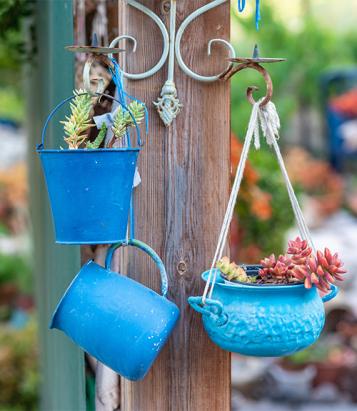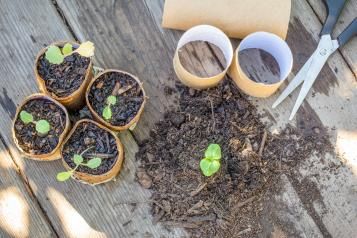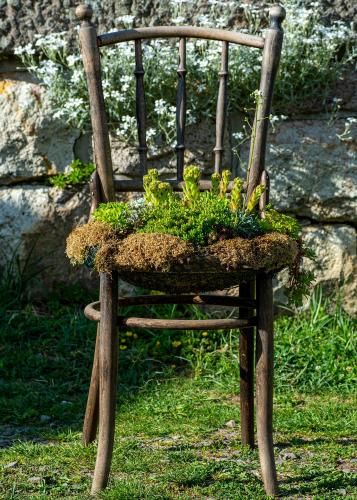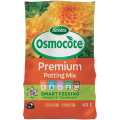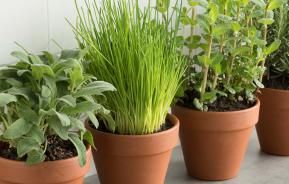Can’t figure out what to do with the knick-knacks lying around the house? How about upcycling them, and incorporating them into your home and garden.
It’s sustainable, reduces waste, saves you money and looks good!
Read on for 6 ways that you can upcycle objects around the house.
Kitchen Pots & Colander Planter
Old pots and pans, especially colanders, are a great way to add a rustic look and feel to your garden.
An old stockpot and saucepan make for a perfect planter for herbs, just drill holes in the bottom to help water drain. If you have an old frying pan lying around, it can also be used as a drip tray. Perhaps, the best kitchen item to re-use in the garden is a colander as it already has natural drainage holes.
For best results growing succulents and cacti feed regularly with Scotts Osmocote® Pour+Feed Cacti & Succulents Liquid Fertiliser, a ready to use liquid feed with visible results in 7 days.
Gumboot Planter
Turn your old pair of gumboots into a fun DIY pot for growing herbs or veggies. For a real pop of colour in the garden, use gumboots of contrasting colours and patterns.
To turn your gumboots into a planter, start off with making drainage holes at the base. Next, fill the bottom with gravel, and then fill half the leg with a quality potting mix, like Scotts Osmocote Premium Potting Mix. Using a quality potting mix is important to ensure that your plants get the nutrients they need to grow twice as big and thrive. Finally, make a hole in the potting mix and gently insert your plant and water thoroughly.
Toilet Paper Roll Seedling Starter
Yes, you can use your empty toilet paper rolls as seedling starters! It may sound odd, but it has quite a few advantages. It’s economical, reduces environmental waste, and since cardboard tubes are biodegradable, the roll and seedling can be transplanted together, thereby reducing transplantation shock.
To create your own seedling starter, fill the roll with Scotts Osmocote Seed Raising & Cutting Mix, which contains Scotts Osmocote® that feeds for 3 months and provides the ideal moisture and nutrient environment for raising stronger seedlings – then plant your seedlings and use like any other seedling container!
Wooden Pallet Planter
A sturdy wooden pallet can be used in a variety of gardening projects. It can be used to make different types of planters, such as a small planter box, a raised garden bed, or a vertical planter for those who don’t have enough space. It can also be used to complement your garden in other ways, like being used to make a garden path, or into a garden bench where you can sit and admire your plants.
Before you start using the pallet as a planter, make sure that the wood is untreated because you don’t want chemicals leaching into the soil. Next, drill holes for drainage, fill with Scotts Osmocote Premium Potting Mix and plant your favourite plants, watering thoroughly.
Old Furniture Planter
Bring back life to your old furniture by turning them into garden planters. Look through your house, go to the Op shop, or checkout online marketplaces to see if you can find something suitable. A chest of drawers, a bedside table, even a bed can be reused into a garden planter.
If you have an old ladder or a shelf it can also become the perfect base for climbing and trailing plants, such as beans or sweet peas. Be sure to add more support if needed.
Mason Jar Herb Garden
Mason jars (or any similar glass containers) are an excellent option to plant herbs indoors. Place some gravel in the bottom of the jar and then fill it halfway with Scotts Osmocote Seed Raising & Cutting Mix. Next, sow seeds or plant seedlings, cover with more potting mix and give them a good watering.
Once the herbs start growing, you can keep them in the jar and harvest as needed, or transplant them to a larger garden bed outdoors.
As exciting as it is to upcycle, do keep the following things in mind:
- Select the planter based on the plant. Make sure that the planter has enough space for the vegetables and herbs you are growing along with the right potting mix.
- Ensure that there is proper drainage in the planter to prevent root rot. The best way to do this is by including drainage holes, using a premium potting mix that drains well, and/or use gravel to improve aeration.

